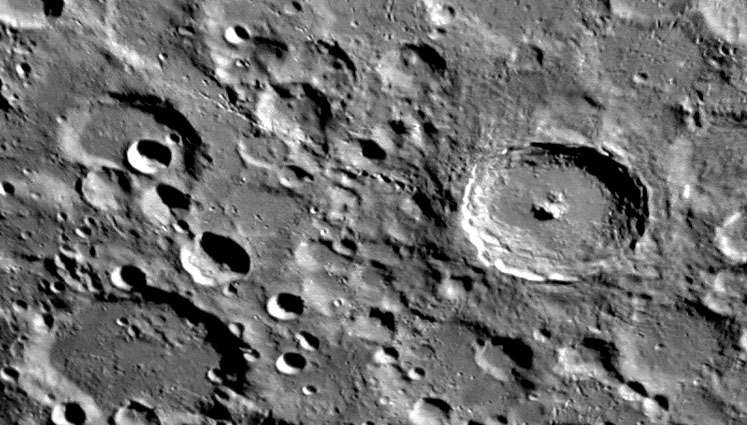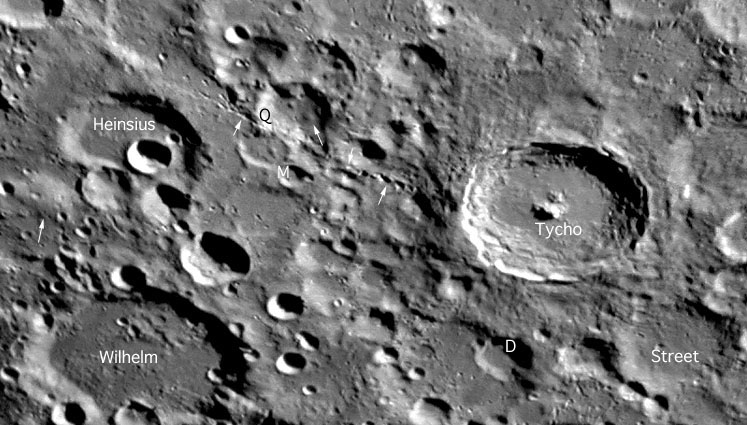October 22, 2015
60 Inches of Tycho
Originally published October 21, 2004
Image Credit: Chris Cook |
|
60 Seconds of Tycho Do you have aperture fever? Do you crave a big scope - a 14" or maybe an 18"? If so, I say, stop thinking small! You can use the Mt Wilson 60" reflector for your lunar studies. This image was taken afocally at the big scope's Cassegrain focus with a standard digital camera. As Chris Cook says anyone can reserve a night on the 60" through the Mt Wilson Institute. The fee is $900 for a full night. So get together 9 of your closest astro-buddies and take the images of a lifetime for half the cost of a specialty eyepiece. If you have mastered your imaging techniques and have good seeing you might capture images like this. The floor of Tycho is smooth with impact melt - the same material that makes a dark ring around Tycho at full Moon, but what shows up remarkably well is the chain of small secondary craters (arrowed on mouseover) to the northwest. These well-resolved craters are about 1.5 km wide. Also note that most of this field is peppered with a roughness that is partially due to Tycho ejecta raining down everywhere. But look at the floor of Tycho D and other nearby small craters. The smoothness of these floors suggests younger surfaces that are hard to explain. Also note the small domical hill on the floor of Heinsius Q - is that a lump of secondary ejecta, a wall slump, or a highland dome? Another peculiar rounded mound is arrowed SW of Heinsius. High resolution views always bring new questions! Technical Details: Related Links: Yesterday's LPOD: Rough Domes Tomorrow's LPOD: H-Alpha Moon |
|
Author & Editor: |
COMMENTS?
Register, Log in, and join in the comments.





